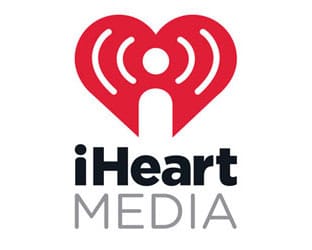RBR-TVBR Exclusive:
If you are a radio professional, your idea of what to call the programming on a radio station is much different than the terminology that your listeners are likely to be using. Take the term Adult Contemporary. That one is not only commonly used in the profession of radio programming, it’s parsed into numerous subcategories. There’s AC. Hot AC. Soft AC. New AC. Urban AC. Central A/C (wait, perhaps we’ve gone too far with that last one).
Listeners are not likely to have the vaguest idea what Adult Contemporary means. So when BIGresearch does its massive research project to determine the buying habits of consumers, the media habits of consumers, and the ways in which the two can most effectively be married, it asks about radio in stylistic rather than program director formatic terminology.
Note that respondents to the survey could check off as many styles as they wish. That is in keeping with the programming tastes of the author – there is no way you can buttonhole yours truly into just one of the answers, and we suspect the same goes for the readers of this report.
Today, we’re taking a peek at the results of BIGresearch’s latest survey to get a brief outline of who is listening to what. If you happen to be a radio programmer, your simple task is to match the music or style to that which you use in the course of populating the minutes and hours of your format.
For starters, there is a clear knockout winner among musical styles when it comes to the musical tastes of Americans, but it is not even close to a winner-take-all type of winner.
The number one musical style is Rock. 29.1% of those surveyed by BIGresearch picked it as a style of programming they use radio to listen to. Oldies (well back at #2 with 26.1%), Top 40, Country and R&B round out the five out of 16 that pulled better than a 20% response rate. Hip Hip and News were just below that benchmark.
Clearly, people are listening to noncommercial radio in significant numbers, because musical styles such as Classical, Jazz and Blues score far better on the BIGresearch list than they ever would on an Arbitron chart.
Here’s the full list:

Next we’ll look at the breakdown of musical styles as they relate to delivering a predominately male or female audience. There is one programming style, and one style only, that is way over the top in favoring one gender over another, and it will likely come as no shock when we report that the style is Sports, which delivers men by a 78.5%-21.5% margin. The closest there is to a converse is Top 40, which women favor by a 61.2%-38.8% margin. Impressive, but not even close to being as monolithic when it comes to lop-sided audience composition.
Here are the 16 program styles, ranked by delivery of men. And women, too, just from the bottom up. Before we get any nasty letters, emails or tweets, we started with men on top because of the 78.5% Sports thing – it simply was the most attention-grabbing number in the study, and we’re on deadline, with limited pondering and rewrite time. We promise that the next time something like this comes up we’ll start with the women.

We also grabbed BIGresearch data on the age of the listeners to each style of radio programming. We picked three numbers – the average age of those who checked off the style – the youngest audience listens to Hip Hop, and the oldest (don’t be shocked) to Oldies – and we also picked the age group it does best with (mostly 10 year cells, except for 18-24 and 65+), and the percentage of that cell that picked it. The good news, in a way, is that the highest cell concentration percentage is Hip Hop’s 35.4% delivered by the 25-34 group. All of these styles appeal to members of multiple age groups, at least to an extent.
Here’s the list, going from young to old:

RBR-TVBR observation: RBR-TVBR is currently working with BIGresearch on a major project to help broadcasters and advertisers get together, and there is a lot more data where this came from. Next week, we’ll pull three companion charts for our friends in the television business, checking the same vital stats for fans of various styles of television programming. As Robin would say, be here next week: Same Bat Time, Same Bat Channel.
We would add that TV programmers may well be able to glean information from the radio data, and radio programmers may be able to pull a vice versa. And we think the info we’ll be digging into will have no small interest to sales and administration types as well.
At any rate, as we work our way through the vast treasure trove of information in the BIGresearch database, we’ll be trying to connect as many dots as there are to be connected. Our advice – read all of it.




